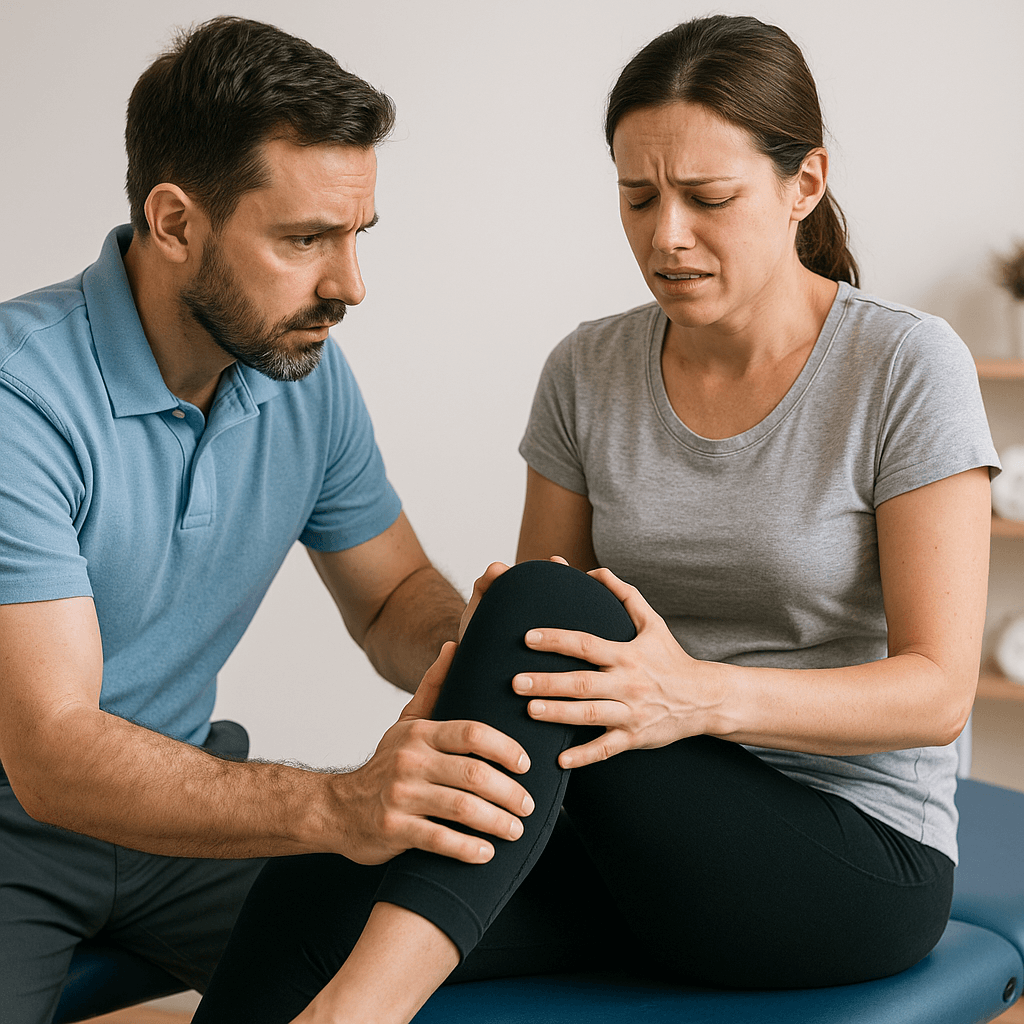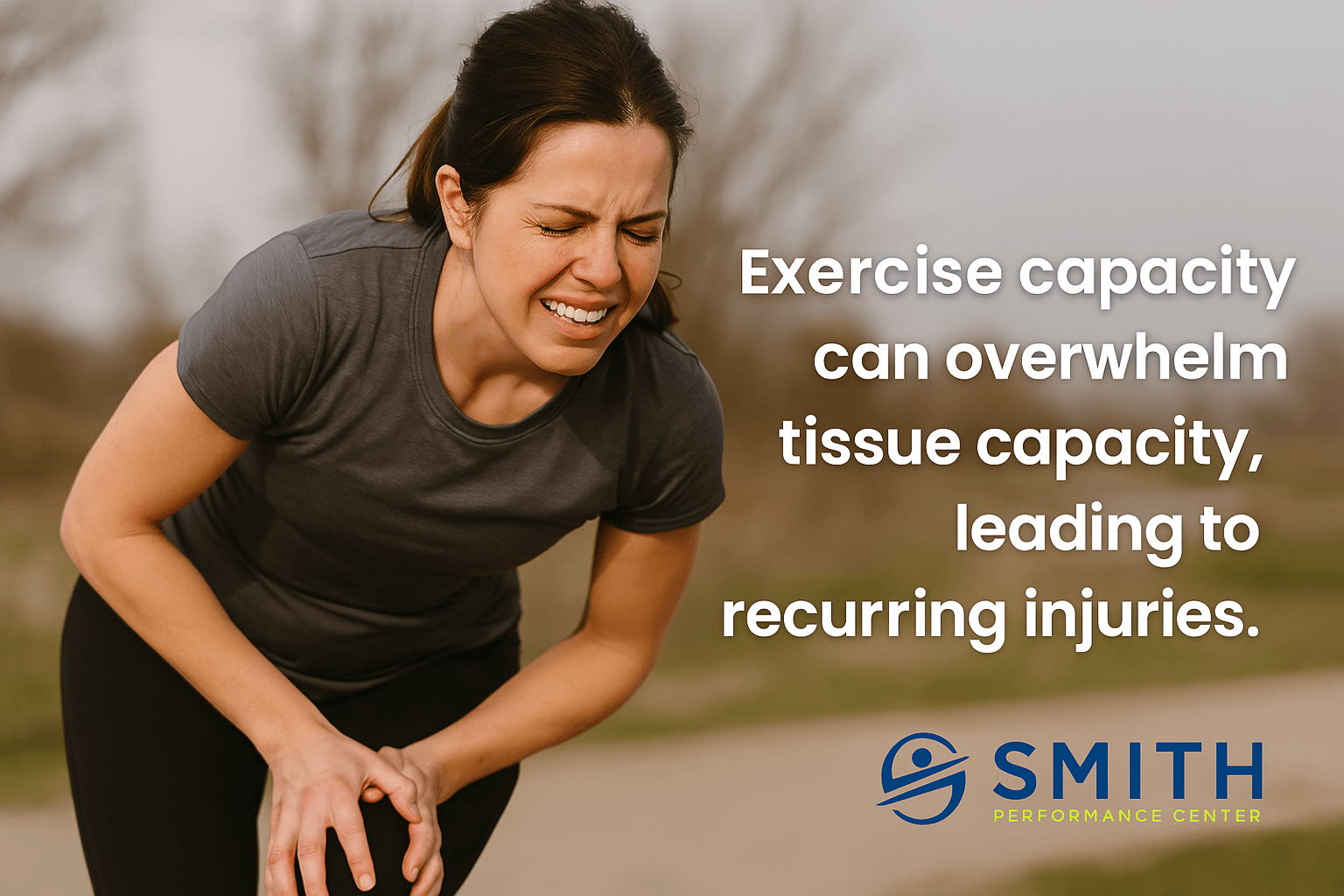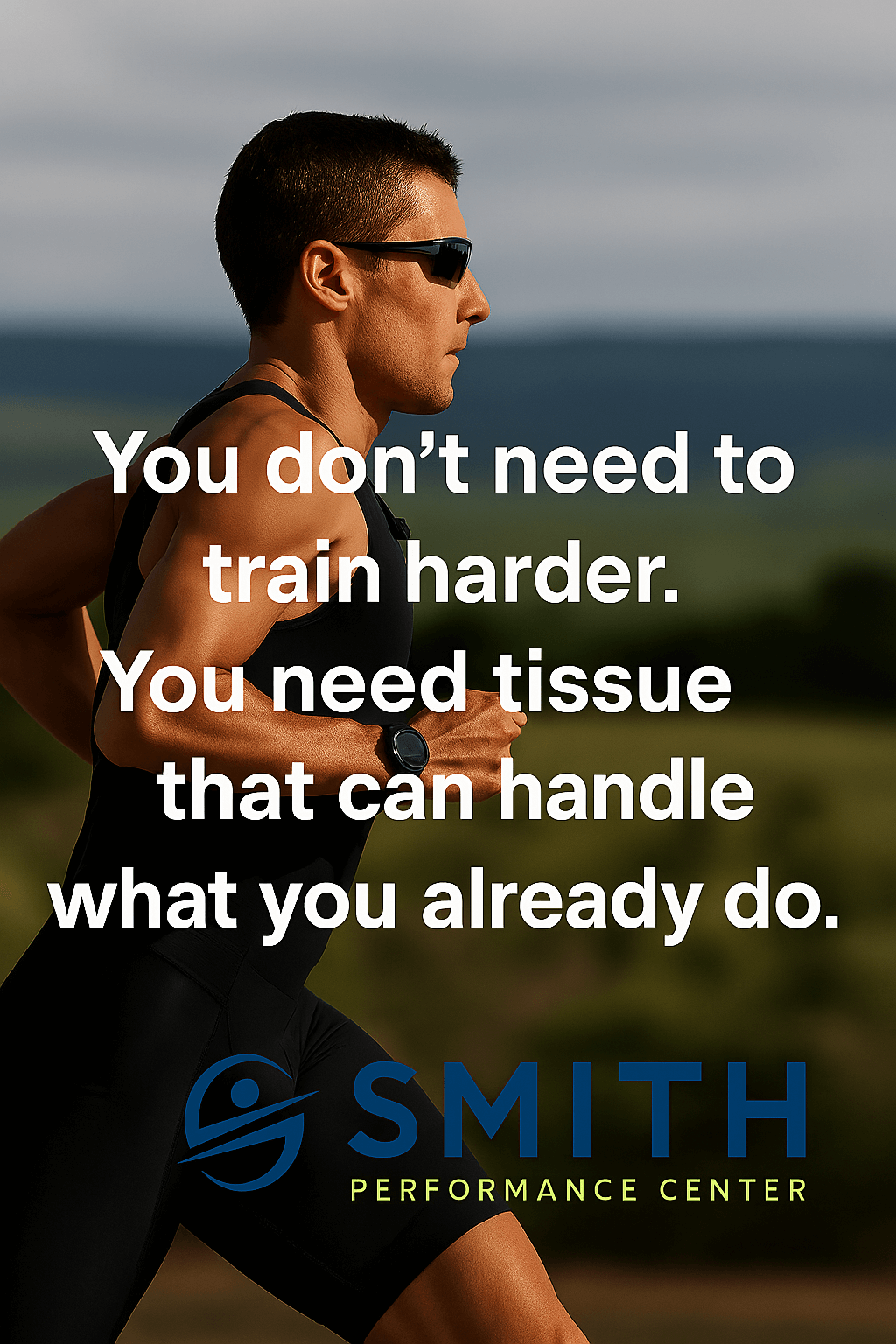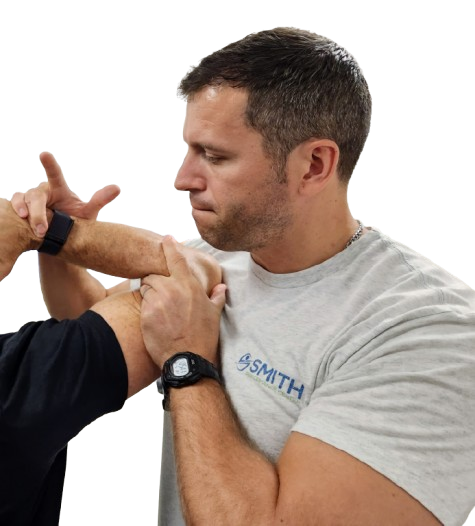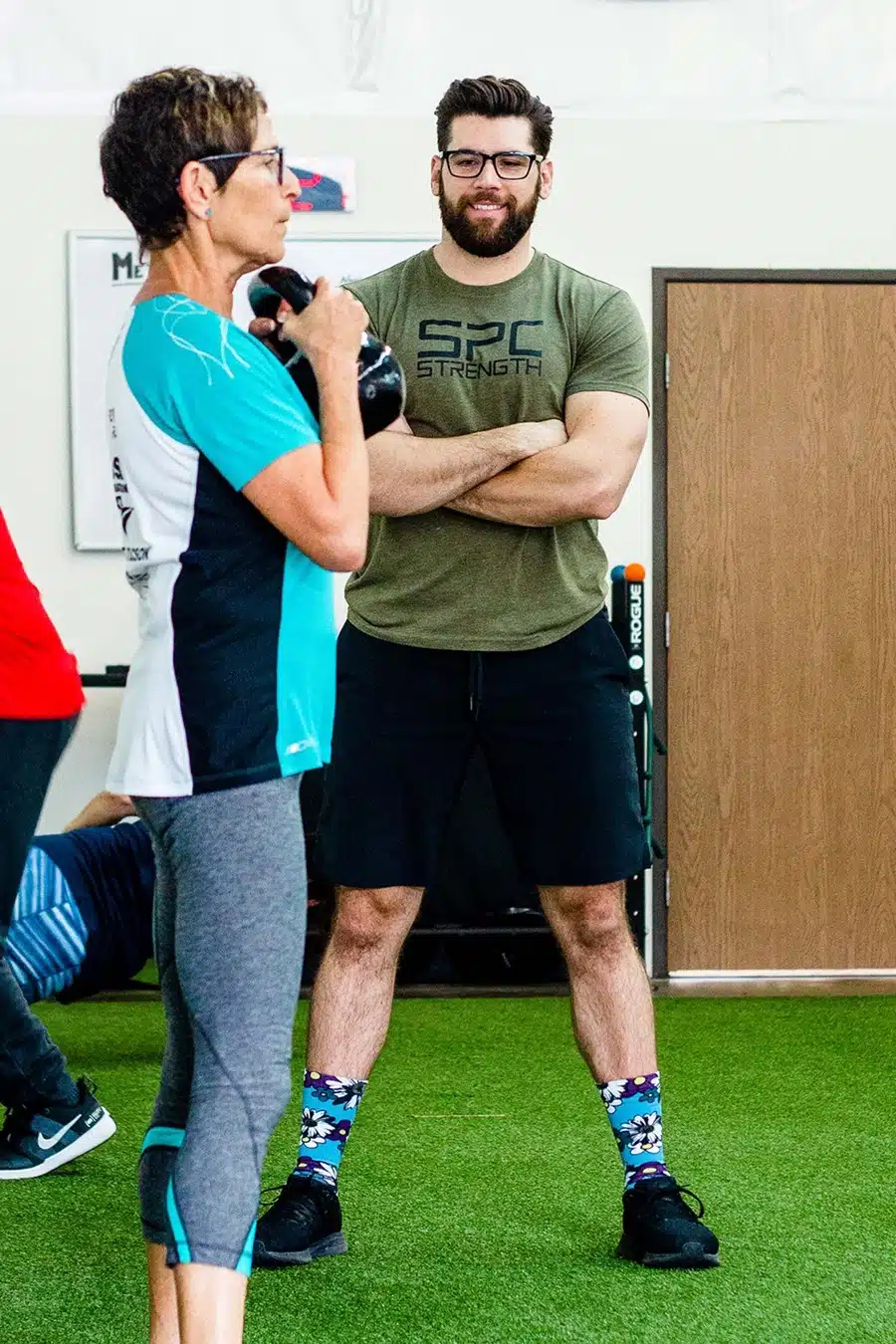The Rehab Standard is an SPC concept that defines when a client has a higher exercise capacity than tissue capacity.
When your tissue capacity is lower than the exercise capacity, the focus of the workout is not how hard you worked out. It is not how much you sweat or how good of a muscle burn you got. The focus is on the healing tissue and that is was not overloaded, irritated, or provoked. A violation of the rehab standard can present as pain after the workout or the next day, even if there was no pain during the workout.
The key is to focus on tissue capacity in the exercise selection, intensity, volume and the type of tissue injured.
We want to look at this last one, the type of tissue injured, in relation to activity progression following an injury.
The 7 Tissues to Consider When Progressing Activity
Improving tissue capacity is the goal of the rehab standard.
There are main tissues to consider that have management strategies:
- Nerves
- Joints
- Tendons
- Muscles
- Disc
- Bone
- Tenosynovium
Nerves
We avoid all stretching because chemically sensitized nerves are mechanically sensitive to stretch.
The nerve takes time to heal and desensitize. Stretching is a mistake during activity progression. Provocation testing for nerve injury looks very similar to the stretches people try doing to ‘loosen their hamstrings.’ Trying to regain flexibility through yoga or stretching can set you back to where your pain and tightness were not under control. The most useful tools are neural flossing, traction, and management of the tissues that get irritated by the nerve such as lumbar paraspinals.
Signs your nerve is not handling the activity progression:
- Any change in sensation during or after (This includes tingling, numbness, burning, or dull feelings compared to the opposite side)
- Loss of muscle strength (we have special tests that look at the nerves called myotome testing)
- A feeling of tightness or loss of motion in flexibility
Tendons
Tendons attach the muscle to bone.
Remember that tendons love load. These are very difficult to manage if you do repetitive cycles of overloading followed by two to three weeks of no loading. Your tendon becomes a disorganized mess that takes longer to heal. So don’t do that. Tendons must be loaded and mild pain that goes away during the activity is fine. We do not want pain after the activity or exercises. If that happens, you need to focus on recovering post-activity, which could be a repeat of your warm-up routine.
Signs your tendon is not handling the activity progression:
- Pain gets worse during the activity
- Pain lingers after the activity
- Increased stiffness or tightness in the tendon after activity that does not resolve
- Pain is greater at the start of the activity
Joints
A joint is where two or more bones meet and allow for movement.
During activity progression, we should see the available motion stay the same or improve. If you lose motion, this means you overloaded the joint. It does not matter if there is no pain. Any loss of motion is bad and means the joint handles the progression poorly.
Do not stretch the joint at this time because it will hurt it. Use tools like traction to return motion.
Signs your joint is not handling the activity progression:
- Loss of motion
- Increased feeling of stiffness
- Joint effusion (swelling) increases
Muscle
Muscle is a common contributor to pain when other tissues are injured.
When you deal with muscle, you are treating the nervous system as much as the individual muscle fibers and fascia. You must avoid cramping. This is caused by the muscle developing an abnormal neuromuscular pattern and firing too easily. You must also avoid the opposite, muscle inhibition. This happens when a muscle quits firing when it should.
The key for muscles is to focus on getting the muscle response you want. General muscle soreness is fine but an overactive or underactive muscle is not.
Signs your joint is not handling the activity progression:
- Trigger points in the muscle (tiny, taut bands of muscle fibers that hurt)
- Any cramping
- Loss of the ability to fire the muscle
- Excessive muscle soreness post-activity
- Soreness in the muscle that is healing that does not resolve
Disc
The disc is a specialized connective tissue in the spine that absorbs force.
While most disc injuries happen in the lumbar spine, cervical injuries and thoracic disc injuries are common. Disc injuries are frustrating because they can be overloaded easily, especially with activity progression. Unlike an injury to the arm or leg, you cannot really bypass loading the disc. When we start to progress activity, the pain caused by the disc must be manageable – meaning you should have tools to reduce the pain if it starts to hurt. If you do not have this, you will have setbacks that make you afraid of exercise and movement.
Beyond load management, you need to remember when you irritate a disc, the motor control system goes haywire. Even if you have been doing core stability exercises, you need to go back to the basics because the transverse abdominus may have shut off.
Signs your disc is not handling the activity progression:
- Increase in aching pain in surrounding areas
- A feeling of instability of loss of control
- Loss of the ability to fire muscles
- Increased pain with active range of motion of the injured area
Bone
Bone injuries are painful and possibly the easiest to manage in activity progression.
Bone will always tell you if you did too much. If you have any pain increase in the area of the bone, you most likely did too much. But while no pain is allowed, long-term unloading is unhealthy. You must load the bone. This is more prescriptive than the other injured tissues and will often have a protocol associated with activity progression.
Signs your bone is not handling the activity progression:
- Any increase in pain in the area where the bone was injured
- Palpation to the injured bone area is more painful after the activity
Tenosynovium
The tenosynovium is only present at the wrist and ankles.
The tendons entering the hand and the foot are covered by the tenosynovium. These are diagnosed by swelling and provocative stretch tests of the tendon inside the tenosynovium. When progressing these injuries, do not stretch. Do not inadvertently hold the foot or hand in stretch positions. You can exercise and load as long as there is no pain. Progression is determined by pain or loss of symptom-free flexibility.
Signs your bone is not handling the activity progression:
- Increase in pain or swelling in the area of the tenosynovium
- Loss of motion in the wrist or ankle
- More pain with loading
Activity Progression and the Rehab Standard
Violating the rehab standard is easy if you do not consider the tissue involved.
If you keep having setbacks, you are likely missing a sign from your tissue that you are doing too much. If you have no pain during the workout, then consider finding a key sign that tells you the tissue is not handling the increased load.
If you need help progressing your activity after physical therapy, please let our team know.

